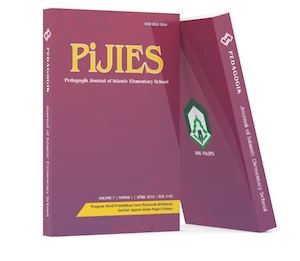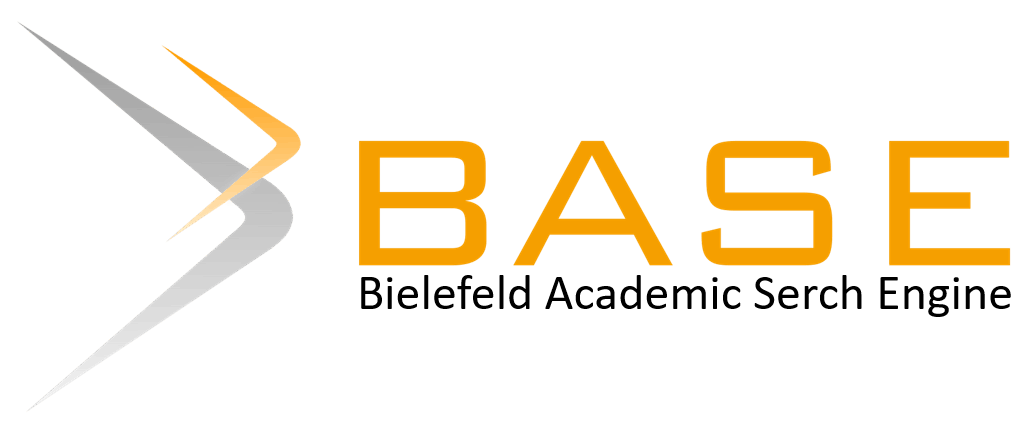The Impact of Active Deep Learner Experience on Learning in Elementary Schools
DOI:
https://doi.org/10.24256/pijies.v8i2.7452Keywords:
adaptive deep learner experience, learning, elementary schoolAbstract
This study was motivated by the widespread diffusion of innovation in learning, particularly in elementary schools. Innovation in learning is a crucial and potential necessity as a step toward improving the quality of education. One form of innovation that has emerged in learning is the application of Adaptive Deep Learner Experience (ADLX) learning. This study employs a literature review method, involving the screening of previous studies related to the implementation of ADLX in elementary school education. Data collection was conducted through the extraction of relevant information from each literature source, including reputable national and international journals. The data obtained were then analyzed qualitatively. This study aims to explore and synthesize the impact of ADLX implementation on learning in elementary schools. The results of the study indicate that the continuous implementation of ADLX has a positive impact in various aspects related to learning in elementary schools. The implication of these findings is that ADLX has great potential as an innovative and effective learning alternative to be applied in elementary school education.
References
Aromataris, E., & Rittano, D. (2014). Constructing a search strategy and searching for evidence. AJN The American Journal of Nursing, 114(5), 49–56.
Artati, A., Akmaluddin, A., & Sari, S. M. (2024). Implementation of The Kauny Method Using the ADLX -Introflex Approach to Improve the Quality of Tahfidz Learning Based on Digitalization at SD-IT Hafizul Ilmi. QALAMUNA: Jurnal Pendidikan, Sosial, Dan Agama, 15(2), 1191–1202. https://doi.org/10.37680/qalamuna.v15i2.3912
Brandisauskiene, A., Buksnyte-Marmiene, L., & Cesnaviciene, J. (2023). Antecedents Predicting Students’ Active Use of Learning Strategies in Schools of Low SES Context within the Framework of Self-Determination Theory. European Journal of Investigation in Health, Psychology and Education, 13(3), 568–579. https://doi.org/10.3390/ejihpe13030044
Hartini, D., & Suherman, U. (2024). Management Of Active Deep Learner Experience Training In Improving Learning Quality. AIM: Journal of Islam Education Management, 2(2), 146–161. https://doi.org/10.15575/aim.v2i2.37991
Ismiatiningsih, Roesminingsih, E., & Karwanto. (2023). Learning Management Based on Active Deep Learner Experience (ADLX) in Developing Teacher Innovation and Competence (Case Study at SMPIT Al Uswah Surabaya). Riwayat: Educational History and Humanities, 6(3), 2269–2275. https://doi.org/10.24815/jr.v6i3.34439
Juliana, E., Wulandari, B. A., & Sofwan, M. (2025). Implementasi pembelajaran berbasis Active Deep Learner Experienxe (ADLX) Introflex dalam Pembelajaran IPAS Kelas V Di Sekolah Dasar. Jurnal Publikasi Pendidikan, 15(1), 265–271. http://ojs.unm.ac.id/index.php/
Kontesa, D. A., Minsih, & Djalal Fuadi. (2023). Penerapan Pendekatan Pembelajaran Active Deep Learner Experience Dalam Membangun Kemandirian Belajar Siswa Sekolah Dasar. Jurnal Elementaria Edukasia, 6(3), 1416–1427. https://doi.org/10.31949/jee.v6i3.6638
Kurniawan, M. R., & Mahmuda, K. (2023). Active deep learing experience learning design on islamic education learning. Al-Fikru: Jurnal Ilmiah, 17(2), 177–189. https://doi.org/https://doi.org/10.51672/alfikru.v17i2
Lailie, N., & Dewi, G. K. (2022). Pengaruh Pembelajaran Active Deep Learner Experience (ADLX) Terhadap Hasil Belajar Siswa SDIT Permata Mulia Mojokerto. Jurnal Pendidikan Dasar Indonesia, 7(1), 22–25. https://doi.org/http://dx.doi.org/10.26737/jpdi.v7i1.3064
Li, X., Zhang, X., Zhao, Y., Zhang, L., & Shang, J. (2023). Exploring the role of learning through play in promoting multimodal learning among children: a pilot study in Chinese first-tier cities. Frontiers in Psychology, 14. https://doi.org/10.3389/fpsyg.2023.1103311
McLoughlin, S., & Kristjánsson, K. (2024). Virtues as protective factors for adolescent mental health. Journal of Research on Adolescence. https://doi.org/10.1111/jora.13004
Montero-Izquierdo, A. I., Jeong, J. S., & González-Gómez, D. (2024). A future classroom lab with active and gamified STEAM proposal for mathematics and science disciplines: Analyzing the effects on pre-service teacher’s affective domain. Heliyon, 10(16). https://doi.org/10.1016/j.heliyon.2024.e35911
Morris, T. T., Dorling, D., Davies, N. M., & Davey Smith, G. (2021). Associations between school enjoyment at age 6 and later educational achievement: evidence from a UK cohort study. Npj Science of Learning, 6(1). https://doi.org/10.1038/s41539-021-00092-w
Rosyid, A., & Mubin, F. (2024). Pembelajaran Abad 21: Melihat Lebih Dekat Inovasi dan Implementasinya Dalam Konteks Pendidikan Indonesia. Jurnal Pendidikan Dan Pemikiran Islam, 7(1), 1. https://doi.org/https://doi.org/10.51476/tarbawi.v7i1.586
Sakti, S. A., Endraswara, S., & Rohman, A. (2024). Revitalizing local wisdom within character education through ethnopedagogy apporach: A case study on a preschool in Yogyakarta. Heliyon, 10(10). https://doi.org/10.1016/j.heliyon.2024.e31370
Sinaga, E. M., & Fauzi, KMS. M. A. (2024). Literature Review: Sasaran Difusi Inovasi dalam Lingkup Pendidikan Dasar. Jurnal Imliah Pendidikan Guru Sekolah Dasar, 17(1), 63–68. https://doi.org/10.33369/pgsd.17.1.63-68
Sugiyarto, W. (2024). Peningkatan Kemampuan Literasi Sains melalui Model Pembelajaran Stem Berbasis ADLX. Education & Learning, 4(1), 11–16. https://doi.org/10.57251/el.v4i1.1276
Sutanto, S. (2024). Transformasi Pendidikan di Sekolah Dasar: Peran Guru dalam Mengimplementasikan Kurikulum Merdeka di Indonesia. Jurnal Guru Sekolah Dasar, 1(1), 69–76. https://doi.org/10.70277/jgsd.v1i1.0009
Syahputra, E. (2024). Pembelajaran Abad 21 Dan Penerapannya di Indonesia. Journal of Information System and Education Development, 2(4), 10–13. https://doi.org/https://doi.org/10.62386/jised.v2i4.104
Syamsuddin, R., & Yasen, S. (2023). Pengaruh Desain Alur Pembelajaran ADLX (Active Deep Learner Experience), Kompetensi Guru dan Budaya Sekolah Terhadap Karakter Siswa di SDIT Ikhtiar Makassar. Jurnal IQRA: Jurnal Pendidikan Islam, 3(1), 2580–5304. https://journal.unismuh.ac.id/index.php/iqra/article/view/11450
Utami, Y., Restiati, A. P., & Elsanti, R. (2024). Implementasi pembelajaran berbasis adlx dengan pendekatan terpadu untuk meningkatkan prestasi belajar pai siswa. Jurnal Ilmiah Pedagogy, 23(1), 26–37. https://doi.org/https://doi.org/10.63889/pedagogy.v16i2.175
Uwais, F. A., & Mujiburrohman. (2023). Desain Kurikulum Terpadu Dengan Pendekatan ADLX (Active Deep Leaner eXperience). Jurnal Kependidikan Didaktika, 12(4), 719–730. https://doi.org/https://doi.org/10.58230/27454312.290
Wagner, L., Holenstein, M., Wepf, H., & Ruch, W. (2020). Character Strengths Are Related to Students’ Achievement, Flow Experiences, and Enjoyment in Teacher-Centered Learning, Individual, and Group Work Beyond Cognitive Ability. Frontiers in Psychology, 11. https://doi.org/10.3389/fpsyg.2020.01324
Downloads
Published
How to Cite
Issue
Section
Citation Check
License
Copyright (c) 2025 Arta Mulya Budi Harsono

This work is licensed under a Creative Commons Attribution-ShareAlike 4.0 International License.
Copyright notice:
Authors retain copyright and grant the journal right of first publication with the work simultaneously licensed under an Attribution-ShareAlike 4.0 International (CC BY-SA 4.0) (https://creativecommons.org/licenses/by-sa/4.0/) that allows others to share the work with an acknowledgement of the work's authorship and initial publication in this journal.
Authors are able to enter into separate, additional contractual arrangements for the non-exclusive distribution of the journal's published version of the work (e.g., post it to an institutional repository or publish it in a book), with an acknowledgement of its initial publication in this journal.
Authors are permitted and encouraged to post their work online (e.g., in institutional repositories or on their website) prior to and during the submission process, as it can lead to productive exchanges, as well as earlier and greater citation of published work (See the Effect of Open Access)







 This is an open access article under the
This is an open access article under the 